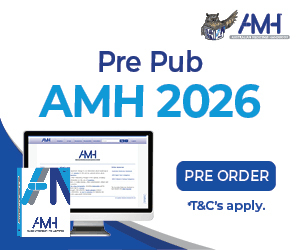Choosing the stairs or speedily sweeping can lower the risk of heart disease, but how much and for how long is needed for it to have an impact?
According to research published in The Lancet Public Health, short bouts of incidental activity, the kind we do as part of daily living, could reduce risk of heart attack, stroke and even premature death – but the length of activity and intensity does matter.
“From walking up the stairs to speedily mopping the floors, in recent years we’ve come to understand that it is not just structured exercise that is good for our health, said senior author Professor Emmanuel Stamatakis from the University of Sydney’s Charles Perkins Centre.
“But we know very little about how these short bouts of incidental activity translate to health benefits,” he said.
The University of Sydney led the team of international researchers, including from England and Scotland. They used wrist-worn wearables data and machine learning to analyse the seven-day incidental physical activity patterns of 25,241 UK adults aged 42-78 years, down to a 10-second time window.
Physical activity micro-patterns were then linked with participants’ health records and they were followed for close to eight years to identify how length and intensity of physical activity bouts were linked to health status.
In this cohort of people who self-reported no participation in exercise or sport they found that 97% of incidental physical activity was accrued in bouts lasting less than 10 minutes.
Short bouts of less than 10 minutes at a moderate to vigorous intensity were associated with a steep decrease in major cardiac events (heart attack/stroke) and death by any cause.
Moving consistently for at least one to three minutes was associated with significantly more benefit (29% lower) than very short bouts of less than one minute.
The longer the bouts of activity the better the results regardless of total activity levels. And the higher the percentage of vigorous activity in each bout the better – those who huffed and puffed for at least 10 seconds per minute saw the greatest benefit.
The findings suggest that people could potentially reduce their risk of major cardiac events by engaging in daily living activities of moderate intensity where they are moving continuously for at least one to three minutes at a time, said lead author Dr Matthew Ahmadi.
“In fact, it appears that this can have comparable health benefits to longer bouts lasting five to 10 minutes,” he said.
“The take-home message here is any type of activity is good for your health, but the more effort you put into those daily tasks and the longer you keep up that energy, the more benefits you are likely to reap,” said Professor Stamatakis.
“If you are huffing and puffing and unable to hold a conversation for some of that time you have hit the sweet spot.”
Why do we need to know more about incidental activity?
Research shows that most people are not meeting recommended physical activity guidelines – fewer than one in five middle-aged adults engage in regular exercise.
“The idea of accruing short bouts of moderate to vigorous activity through daily living activities makes physical activity much more accessible to people who are unwilling or unable to take part in structured exercise,” said Dr Ahmadi.
“But as we see in this data, the length and the vigour people put into these incidental activities matters.”
The study also provides some of the first direct evidence to support the idea that movement doesn’t have to be completed in continuous 10 minute bouts to be beneficial, according to the researchers. This has been a widely held belief until the World Health Organization removed this from their physical activity guidelines in 2020, instead focusing on the idea that ‘every move counts towards better health’.
“If verified in future research, our findings could inform future public health messaging targeting the general population raising awareness of potential health benefits from short physical activity bouts in everyday life, especially for adults who do not or cannot exercise.”








